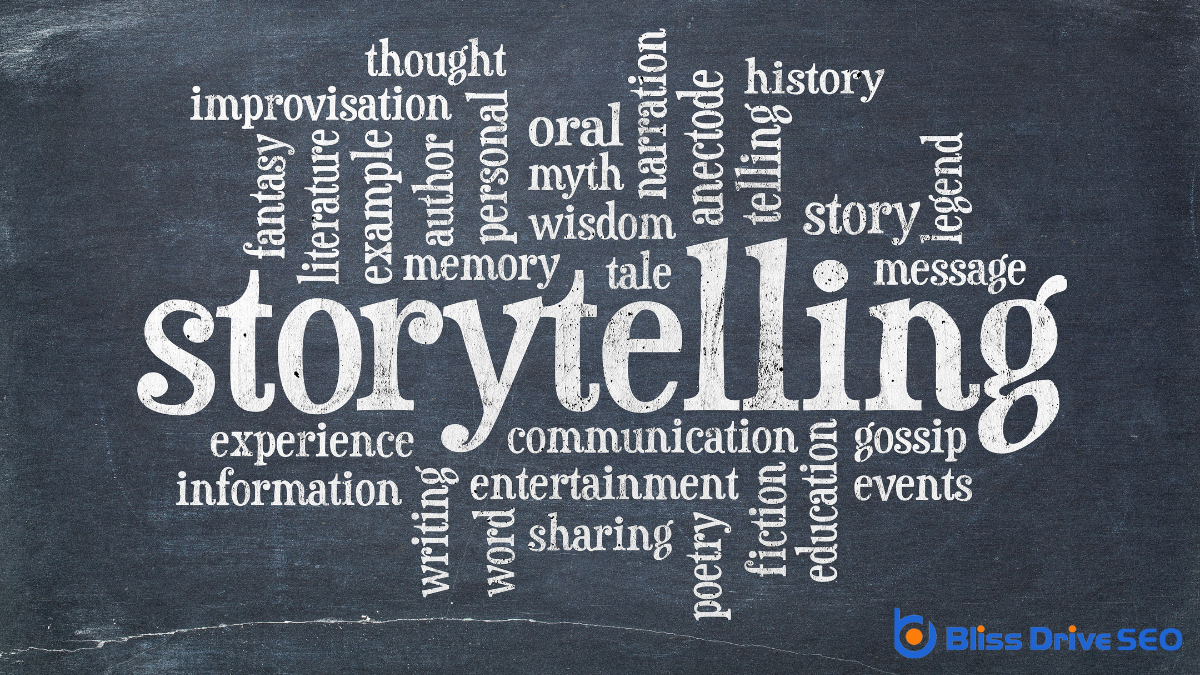Digital Marketing Services
Learn More About Us

Content marketingA strategic approach focused on creating and distributing valuable, relevant, and consistent content... and copywriting aren't the same, but they complement each other. Content marketing is about building relationships by sharing valuable content that resonates with your audience over time. You're looking to engage, inform, or entertain through blogs, videos, or social media. On the other hand, copywriting focuses on persuasion, pushing for immediate actions like making a purchase or signing up for a service. It's about crafting concise, essential messages. While content marketing nurtures trust, copywriting aims for immediate response. Both are crucial for successful marketing strategies. Excited to discover how blending these approaches can enhance your marketing efforts?
Understanding content marketing requires recognizing its role in engaging and building relationships with your audience. It's a strategic approach focused on creating valuable, relevant content to attract and retain a clearly defined audience. You're not just pushing a product; you're offering information that solves problems or entertains, ensuring your audience finds value in what you share. This builds trust and credibility over time, making people more likely to choose your brand when they need products or services.
When you immerse yourself in content marketing, think of it as a long-term commitment. It's about storytelling that resonates with your audience, using blogs, videos, social media posts, and newsletters. You're providing content that your audience wants, when they need it. This means you need to understand who your audience is, what they care about, and how they consume content.

At its core, copywriting is all about persuasion and action. When you engage in copywriting, you're crafting words that motivate people to take a specific step. Whether that step is buying a product, signing up for a newsletterA regularly distributed email containing news, updates, and content relevant to subscribers., or clicking a link, your goal is to generate a response. You use language to connect with your audience on an emotional level, tapping into their desires and needs.
This means understanding what makes them tick and using that insight to create compelling messages.
In copywriting, every word counts. You need to be concise and clear, ensuring your message isn't only persuasive but also direct. It's about creating urgency and highlighting benefits to prompt immediate action. Think of it as having a conversation where the end goal is to guide someone towards a decision.
Copywriting often involves various forms like advertisements, sales pages, or product descriptionsDetailed information about a product, including features, benefits, and specifications.. Your focus is always on results. Good copy is like a bridge, moving the reader seamlessly from curiosity to commitment.
To master it, think strategically and always keep the audience's motivations at heart. It's a skill that, when done right, can transform interest into action.
While copywriting focuses on driving immediate action, content marketing takes a broader approach by building relationships and providing value over time. When you engage in copywriting, your goal is to persuade readers to take a specific action, like clicking a link, making a purchase, or subscribing to a service. It's about crafting compelling messages that prompt instant responses. Think of it as a direct conversation where your words aim to spark an immediate reaction.
On the other hand, content marketing involves creating and sharing valuable information that's relevant to your audience's interests and needs. Instead of pushing for a quick sale, you nurture trust and loyalty. Through blog posts, videos, podcastsAudio content distributed through digital channels, often in series format., and social media, you're consistently providing insights and solutions. This strategy doesn't just aim for one-time interactions; it builds a community around your brand.
A key difference lies in their respective timelines: copywriting seeks short-term results, while content marketing focuses on long-term engagement. By understanding this distinction, you can better tailor your strategies to meet your audience's needs and your business goals. Remember, successful marketing often requires a blend of both approaches.
When considering content marketing and copywriting, you need to clearly define your marketing objectives and set goals that align with your overall content strategyA plan for creating, publishing, and managing content to meet business goals.. This involves identifying what you want to achieve, whether it's building brand awarenessThe extent to which consumers are familiar with the qualities or image of a particular brand. or increasing conversions.
To verification you're on the right track, regularly measure success metrics to evaluate the effectiveness of your efforts.
To commence a successful content marketing or copywriting campaignA set of ad groups sharing a budget, targeting options, and other settings., it's crucial to clearly define your marketing objectives. Without concrete objectives, your efforts can become misguided and ineffective. By setting clear targets, you not only streamline your campaign but also align your team with a unified purpose.
Here's how you can define your marketing objectives effectively:
Crafting a sturdy content strategy pivots on setting clear objectives and goals that align with your overarching marketing plan. You need to understand what you want your content to achieve. Is it brand awareness, lead generationThe process of attracting and converting prospects into potential customers., customer engagementThe level of interaction and involvement a customer has with a brand., or driving sales? Each goal shapes the type of content you'll create, where it will be distributed, and how it will be presented.
When defining your content strategy goals, be specific. Vague goals lead to scattered efforts and diluted results. Instead of saying, "increase traffic," aim to "boost website traffic by 20% in three months." This specificity gives direction and allows you to allocate resources effectively.
Think about who your content is for. Identifying your target audience is pivotal. Tailor your goals to meet their needs and preferences. This ensures your content resonates with them, maximizing engagement and impact.
Furthermore, consider the customer journeyThe complete experience a customer has with a brand, from initial awareness to post-purchase interac.... Different stages require different types of content. Whether your audience is discovering your brand or ready to make a purchase, your strategy should guide them seamlessly through the funnel.
Determining success in your content marketing efforts hinges on choosing the right metrics to measure your objectives and goals. By focusing on relevant success metrics, you can evaluate your strategies and determine what's working and what needs adjustment. It's important to align these metrics with your specific objectives and goals, ensuring that they provide meaningful insights. Here's how you can approach measuring success effectively:

To effectively engage your audience, employ storytelling techniques that captivate and connect emotionally. Use persuasive writing strategies to influence and inspire action, ensuring your message resonates. Finally, target your audience meticulously to tailor content that meets their specific needs and preferences.
Amidst the vast sea of digital content, engaging storytelling techniques can be your lifeboat, helping your message stand out and connect with your audience. To capture attention and foster a connection, you need to weave storiesA feature on platforms like Instagram and Facebook where users can post photos and videos that disap... that resonate and compel. Here's how you can do it effectively:
When you're looking to persuade your audience, tapping into effective writing strategies can make all the difference. One essential technique is to focus on benefits rather than features. You want to show your audience how your product or service improves their lives. Paint a picture of the positive outcomes they'll experience. Use vivid language that appeals to their emotions and makes them envision themselves enjoying the benefits.
Another strategy is to establish credibility. You need to show that you're trustworthy, knowledgeable, and reliable. You can do this by incorporating testimonials, expert endorsements, or citing relevant data. When your audience sees that others trust you, they're more likely to do the same.
Don't underestimate the power of a clear call-to-action (CTA). You need to guide your audience on what to do next. Be direct and specific, using action-oriented words like "discover," "start," or "join."
Identifying and understanding your audience is essential for crafting messages that resonate and drive engagement. To target your audience effectively, you need to go beyond basic demographics and explore deeper insights. Here are three methods to help you connect with your audience:
In the world of content marketing and copywriting, audience engagement stands as the cornerstone of effective communication. When you focus on engaging your audience, you're more likely to capture their interest and hold their attention. The key is to speak directly to their needs and interests, using language that resonates with them. By grasping what your audience values, you can tailor your message to spark interest and encourage interaction.
Think about how you can create a dialogue rather than just delivering a monologue. Ask questions and invite feedback to make your audience feel like they're part of the conversation. Use storytelling to make your content more relatable and memorable. When you incorporate real-life examples or anecdotes, your message becomes more compelling and easier for your audience to connect with.
Don't underestimate the power of visuals. Incorporate images, videos, or infographicsVisual representations of information, data, or knowledge intended to present complex information qu... to break up text and make your content more appealing. Visuals can communicate complex ideas quickly and effectively, enhancing your audience's understanding.
Additionally, make sure your content is easy to navigate and mobile-friendly, as this enhances the overall experience and keeps your audience engaged. Remember, engagement is about building a relationship, not just delivering information.

While audience engagement is about forming meaningful connections, measuring success determines how effective those connections really are. It's important to assess how your content marketing and copywriting efforts meet your business goals. But how do you actually measure success? There are a few key metrics you should focus on to make sure you're on the right track.
To truly leverage the power of both content marketing and copywriting, you need to integrate these approaches seamlessly. Start by aligning your goals. Understand that content marketing builds trust and educates, while copywriting persuades and drives action. When you blend them, you create a powerful strategy that both informs and converts your audience.
First, identify the stages of your customer journey. Use content marketing to attract and engage. OfferThe specific product or service being promoted by affiliates. valuable insights, tips, or stories that resonate with your audience. Once you've captured their interest, switch gears to copywriting. Craft compelling calls to action that guide them toward making a decision, whether it's signing up for a newsletter or purchasing a product.
Next, maintain a consistent voice. Your audience should feel like they're hearing from the same brand, regardless of whether they're reading a blog post or a product description. Consistency builds trust and reinforces your message.
To wrap up, content marketing and copywriting aren't the same, but they complement each other beautifully. You should focus on content marketing to build relationships and educate your audience while leveraging copywriting to persuade and drive action. By understanding the key differences, objectives, and techniques of each, you can engage your audience more effectively. Measure success through clear metrics and integrate both approaches for a well-rounded strategy that boosts your brand's visibility and impact.
